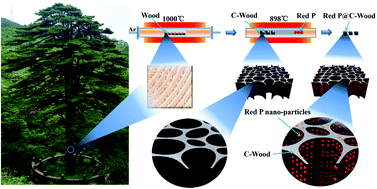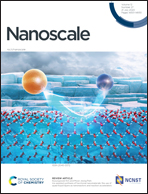Anisotropic, low-tortuosity and ultra-thick red P@C-Wood electrodes for sodium-ion batteries†
Abstract
Red phosphorus (P) is considered to be the most suitable electrode for sodium-ion batteries due to its low cost, earth abundance and high theoretical capacity. Numerous studies have focused on improving the low conductivity and the extremely large volume change of red P during the cycling process. However, these strategies heavily decrease the P mass loading in the electrode. Herein, inspired by natural wood, we successfully develop an ultra-thick bulk red Phosphorus@Carbon-Wood (red P@C-Wood) electrode via the vaporization-condensation process. The sodium-ion batteries assembled with the fabricated red P@C-Wood electrode provide a high areal capacity of 18 mA h cm−2 (≈5 times those of other reported electrodes) and the P mass loading of up to 8.4 mg cm−2 (≥2 times those of other reported electrodes). The combination of red phosphorus and carbonized wood provides a new strategy for people to improve the areal energy density of lithium and sodium batteries.



 Please wait while we load your content...
Please wait while we load your content...